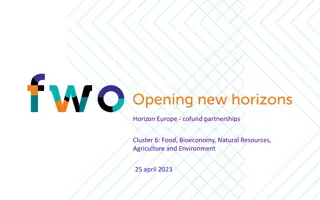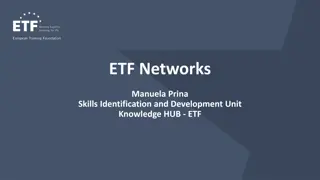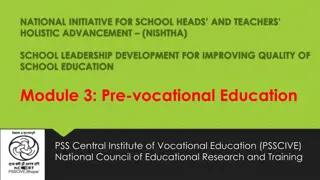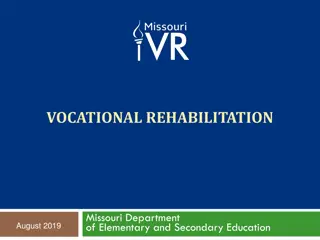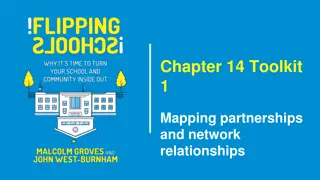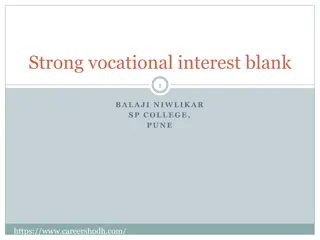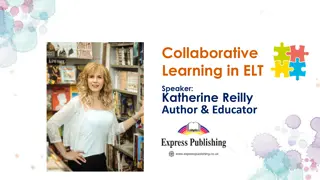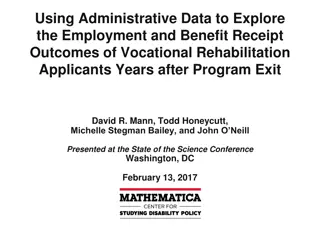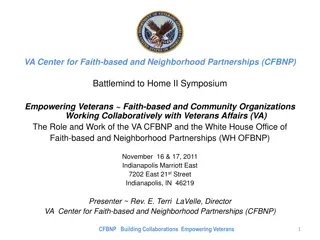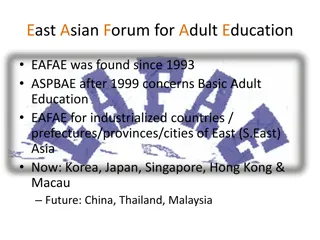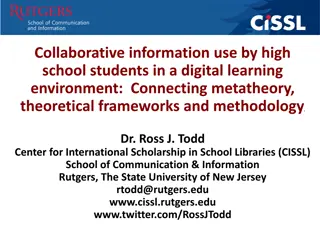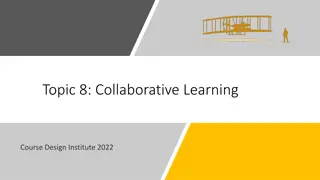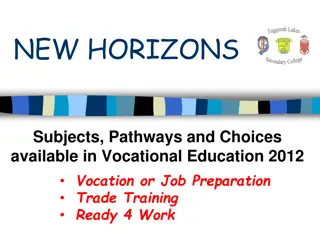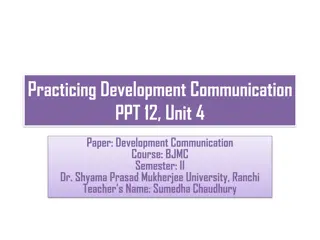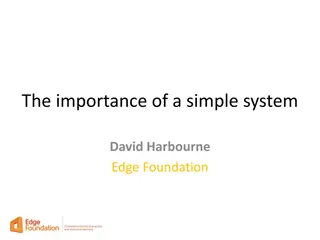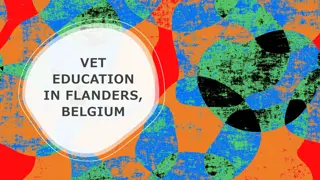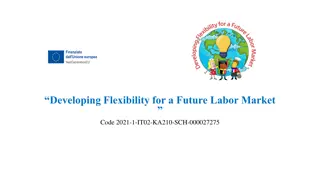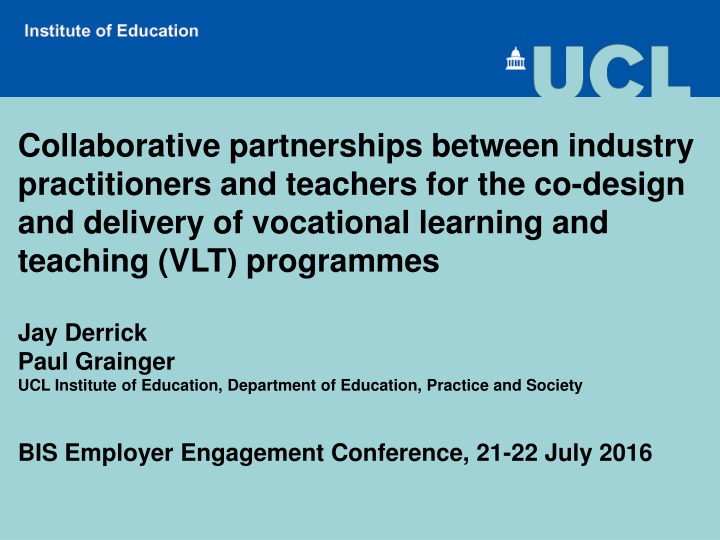
Collaborative Partnerships in Vocational Learning Programs
This study explores collaborations between industry practitioners and teachers in the co-design and delivery of vocational learning and teaching programs. It covers theoretical contexts, case studies, and benefits for employers, emphasizing the importance of situated learning and boundary-crossing practices.
Download Presentation

Please find below an Image/Link to download the presentation.
The content on the website is provided AS IS for your information and personal use only. It may not be sold, licensed, or shared on other websites without obtaining consent from the author. If you encounter any issues during the download, it is possible that the publisher has removed the file from their server.
You are allowed to download the files provided on this website for personal or commercial use, subject to the condition that they are used lawfully. All files are the property of their respective owners.
The content on the website is provided AS IS for your information and personal use only. It may not be sold, licensed, or shared on other websites without obtaining consent from the author.
E N D
Presentation Transcript
Collaborative partnerships between industry practitioners and teachers for the co-design and delivery of vocational learning and teaching (VLT) programmes Jay Derrick Paul Grainger UCL Institute of Education, Department of Education, Practice and Society BIS Employer Engagement Conference, 21-22 July 2016
Outline Theoretical context From CAVTL onwards: a developing argument CAVTL: key recommendations and assumptions Boundary crossing Case study video Teach Too project Gatsby SET L3 project Examples of Teach Too and Gatsby project case studies Theorising the collaborative co-design approach Benefits for employers References
Theoretical context 1: Situatedness All learning is situated (Lave and Wenger 1991) Dynamic relationship between work practice and VLT (Fuller and Unwin 2004, Akkerman and Bakker 2011) Learning for work as continuous recontexualisation (Guile 2014) Practice-theory debate Theory prioritised (eg Winch 2010, Young 2008), Practice prioritised (eg Hager 2013), Linked approaches (eg Billett 2001, Guile et al 2016) Activity theory (Engestrom 1999, 2008) provides a theoretical approach that: encompasses all these perspectives is consistent with empirical research aligns with trajectory of present policy frameworks (CAVTL 2013, ETF in press, Guile et al 2016, Sainsbury 2016)
Theoretical context 2: Literature on local and regional skills and innovation systems: 1. Clusters Dynamic conceptualisations of learning and innovation for the knowledge-based economy in regional agglomerations of economic activity (eg James et al 2011) 2. Cross-territorial knowledge dynamics Local skills systems seen less as collections of interacting mechanical systems, more as fluid fields of activity, potential and possibility (eg Crevoisier and Jeannerat 2009) 3. High progression and skills ecosystems (HPSEs) Industrial and business clusters, Entrepreneurial and devolved state, Innovation role of HE, Progression and hub role of FE (eg Stevenson 2016, Hodgson and Spours 2013, 2016)
CAVTL: line of sight to work (CAVTL 2013) Teach Too: industry practitioners teaching their work (ETF 2015, 2016, and in press) Gatsby SET project: boundary crossing as a necessary feature of VLT (Guile et al 2016)
CAVTL: key recommendations Characteristics of excellent VLT programmes: clear line of sight to work on all vocational programmes; dual professional teachers and trainers who combine occupational and pedagogical expertise, and are trusted and given the time to develop partnerships and curricula with employers; access to industry-standard facilities and resources reflecting the ways in which technology is transforming work; clear escalators to higher level vocational learning, developing and combining deep knowledge and skills.
Occupational expertise: is developed through combination of sustained practice & understanding of theory has work-related attributes at its heart Effective vocational learning and teaching: has practical problem-solving & critical reflection on experience, including learning from mistakes in real & simulated settings, at its heart is collaborative and contextualised takes place within communities of practice with different types of teacher & making use of the experience & knowledge of all learners highlights technology requires a range of assessment and feedback methods benefits from operating across more than one setting Occupational standards: are dynamic and evolving
Boundary crossing - A continuous feature of effective and innovative skills systems 4 types of boundary: Training providers, employers, communities, learners & families pre-given course & qualification requirements, & employers needs theoretical & practical learning learners initial interests & their potential, through participating in a combination of provider-based teaching & learning, work experience & self-directed efforts Empirical evidence for this focus in the Teach Too and Gatsby SET projects takes us beyond CAVTL
Teach Too: encourages people from industry to be involved in teaching their work contributes to vocational education and training opens a clear line of sight to work. This includes: industry professionals teaching in provider or workplace environments, and/or contributing to curriculum development, whilst continuing to work; promoting the practice of teachers and trainers updating their industry experience; helping to build the two-way street genuinely collaborative arrangements between employers and providers. (ETF 2015)
Gatsby SET L3 project 2016: Looked at academic research and grey literature From these, a framework for the investigation of vocational learning and teaching was generated Used 5 college case studies to identify features of excellent VLT practice, to show how they reinforce, add to, or go beyond CAVTL
Sample Teach Too development projects Fashion design and making: Fashion Enter and the ASOS Stitching Academy Forensics/crime scene investigation: City and Islington College and British Transport Police Landside and Airside Airport Industries: Craven College and Swissport Freelance web design and construction start-ups: ELATT and CrowdSkills Hairdressing micro-businesses co-designing social media-based VET resources, marketing and training (UKTD) Robotics: Carshalton College and Mirobot Gatsby case studies: L3 SET in colleges Vehicle Repair engineering, Computer-Aided Design Materials Engineering Computer engineering and games development Energy industry engineering Electrical engineering
Theorising collaborative learning and innovation at work Activity theory (Engestrom 1999, 2008) Deeply contextual, locally specific Acknowledges continual interplay between knowledge and practice Accounts for collaborative working across disciplinary and organisational boundaries Theorises the production of artefacts as the focus of collaborative learning Dynamic: assumes contexts and processes evolve over time Improves on earlier theories (eg Nonaka and Takeuchi 1997), which are: Deterministic Evidence based only on large scale business processes Theorises knowledge creation from static conceptions of different types of knowledge (tacit, explicit) Doesn t focus strongly on the organisation of teams
Benefits for employers New recruits better trained and prepared for realities of employment Enhanced presence within their locality and community Developing professional identity and expertise of staff through mentoring and teaching Language of instruction nearer to the language of work VET provision more adaptive to changes in workplaces Increased engagement of employers in local skill systems Working across boundaries creates possibilities for innovation Focus on workplace skills and capacity rather than qualifications Better use of local resources and facilities
References 1 Akkerman S and Bakker A (2011). Boundary Crossing and Boundary Objects, Review of Educational Research 81(2) 132- 169 Billett, S. (2001). Learning through working life: interdependencies at work , Studies in Continuing Education, 23(1):19-35. CAVTL (2013). It s about work: excellent adult vocational teaching and learning. London: Learning and Skills Improvement Service Crevoisier O and Jeannerat H (2009). Territorial Knowledge Dynamics: From the Proximity Paradigm to Multi-Location Milieus. European Planning Studies, August 2009 Engestrom, Y (1999). Innovative learning in work teams: analysing cycles of knowledge creation in practice. In Perspectives on Activity Theory, ed Y Engestrom, R Miettinen, R-L Punamaki. Cambridge: Cambridge University Press Engestrom, Y (2008). From Team to Knots: Activity theoretical studies of collaboration and learning at work. Cambridge: Cambridge University Press ETF (2015). Adapted from http://www.et-foundation.co.uk/supporting/support-for-employers/teach/. Education and Training Foundation. ETF (2016): resources for Teach Too, accessed 14-07-16 at http://tvet.excellencegateway.org.uk/vocabulary/EGresourcetype/Effective%20practice%20example ETF (in press, expected August 2016). A Framework for Developing Occupational Expertise in the 21st Century. London: ETF and UCL Centre for Post 14 Education and Work Fuller A and Unwin L. (2004). Expansive learning environments: integrating organisational and personal development. In Rainbird, H., Fuller, A., and Munro, A. (eds), Workplace Learning in Context. London: Routledge Guile G, Kersh N and Tiris, M (2016). Enhancing SET teaching at Level 3. London: UCL Centre for Engineering Education, UCL Centre for Post 14 Education and Work
References 2 Guile, D. (2014). Professional knowledge and professional practice as continuous recontextualisation: a social practice perspective. In Young, M. and Muller, J. (eds), Knowledge, Expertise and the Professions. London: Routledge Hager, P. (2013). Practice as a Key Idea in Understanding Work-based Learning. In Gibbs, P. (ed), Learning, Work and Practice: New Understandings. Dordrecht: Springer Hodgson A and Spours K. (2013). An ecological analysis of the dynamics of localities: a 14+ low opportunity progression equilibrium in action. Journal of Education and Work, DOI:10.1080/13639080.2013.805187 Hodgson A and Spours K (2016). The evolution of social ecosystem thinking. Unpublished seminar paper given at Ecosystem Thinking, 22-06-16. UCL Centre for Post 14 Education and Work James L, Guile, D and Unwin L (2011). From learning for the knowledge-based economy to learning for growth: re- examining clusters, innovation and qualifications. London: UCL Institute of Education Centre for learning and Life Chances in Knowledge Economies and Societies (LLAKES) Lave J and Wenger E (1991). Situated learning. Cambridge: Cambridge University Press Nonaka I and Takeuchi H (1995). The knowledge-creating company. Oxford: Oxford University Press Sainsbury D. (2016). Post-16 Skills Plan (The Sainsbury Report). London: DBIS and DfE Stevenson M (2016). Talent Ecosystems. Unpublished seminar paper given at Ecosystem Thinking, 22-06-16. UCL Centre for Post 14 Education and Work Winch, C. (2010). Dimensions of Expertise. London: Continuum Young, M. (2008). Bringing Knowledge Back In. London: Routledge

